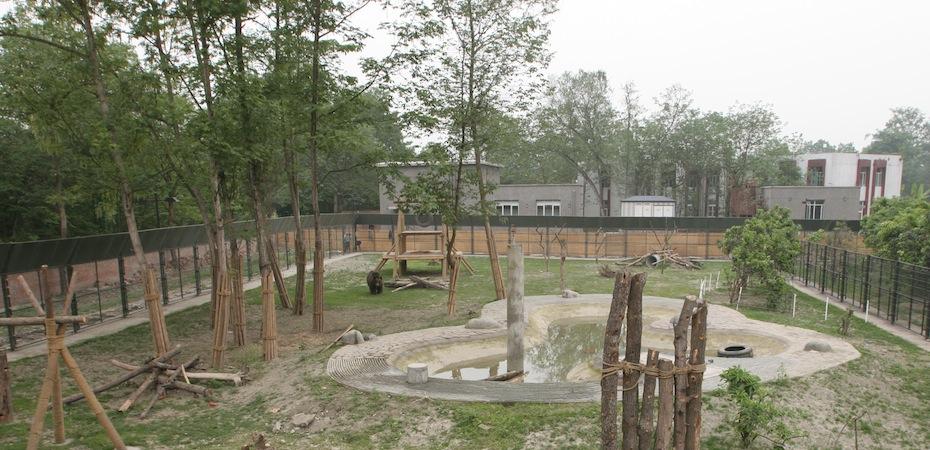The China Bear Rescue Centre in Chengdu was Animals Asia’s first bear sanctuary and also the first of its kind in the world. An adventurous project, it is a safe haven combining secure, semi-natural rehabilitation areas with bamboo forest enclosures designed to provide the bears with a secure and stimulating environment for the remaining years of their lives and to act as a centre for research and education.
Since 2000, when the Chinese government gave us access to an abandoned wildlife sanctuary and the first 63 rescued bears arrived, the centre has seen continual developments and improvements. Today there are 11 bear houses and 15 natural and semi-natural enclosures – including two special-care enclosures for old or mobility-challenged bears, and two special enclosures for brown bears. These can currently house around 250 bears, depending on their needs (extra space is required for special-needs bears). Many of the enrichment furnishings and toys that the bears enjoy in their enclosures have been made from local materials and built onsite by our own bear horticulture team.
Peter Egan at Animals Asia's bear rescue centre in Chengdu, China.
The sanctuary also has a fully-equipped veterinary hospital, a sheltered quarantine area, an administrative block, a public education centre, staff accommodation, staff canteen and a bear kitchen. It also incorporates a herb garden for growing natural alternatives to bear bile and a bear cemetary for those friends we have lost. Specially created viewing areas around three bear houses enable staff and visitors to observe the bears close-up in their enclosures.


















 International
International United Kingdom
United Kingdom United States
United States Australia
Australia Germany
Germany Italy
Italy Hong Kong (EN)
Hong Kong (EN) Hong Kong (繁)
Hong Kong (繁) French
French China
China Vietnam
Vietnam